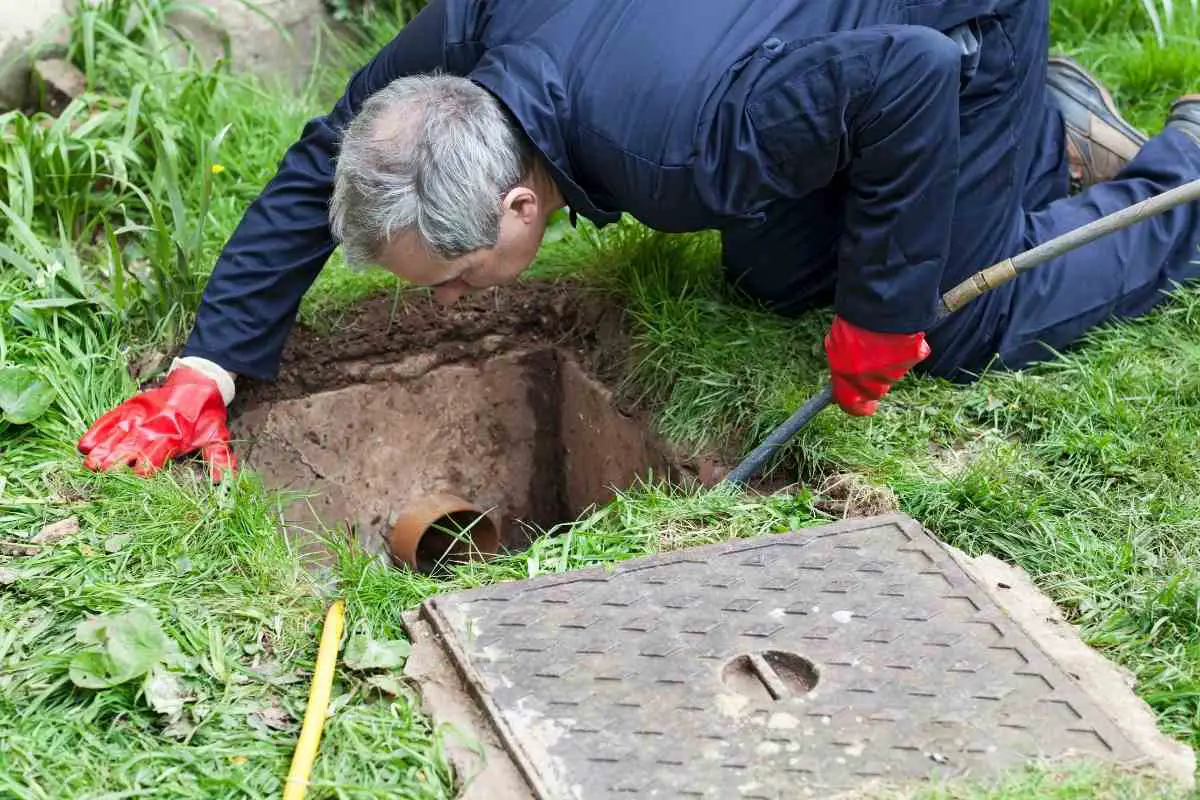While you can’t do without them, drain covers can be an unattractive distraction to an otherwise beautiful backyard.
If you want to get rid of the unsightly and rusty cover on your farm’s drainage, you are in the right place – here, you’ll find how to disguise the drain covers using natural and artificial materials.
What are Drain Covers?
The name says it all – these are lids, mostly made using cast iron, that cover manholes in your garden.
They prevent the unpleasant odor produced by wastewater from dampening the moods in your backyard.
More Importantly – They cover the holes through which sewage passes, water that would have otherwise been runoff and caused an inconceivable mess in your garden.
Despite their usefulness, drain covers stick out like sore thumbs.
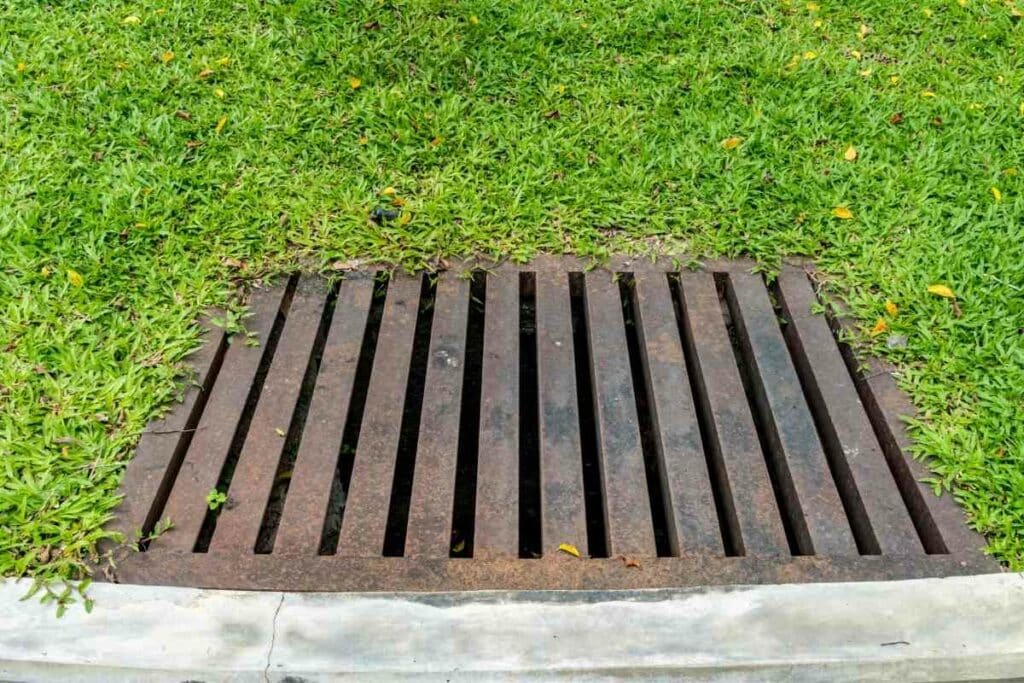
Imagine having a green, mowed lawn with a rusty spot at its center – it defeats the purpose of maintenance.
For this reason, you must devise intelligent ways of disguising your drain covers.
How to Disguise Drain Covers
Here are some valuable tips for making your drain covers less noticeable.
Use plants
Plants present the easiest way to disguise your drain covers.
It doesn’t matter if you’re keen on the arrangement – a few plants will suffice, provided they grow broad leaves.

It’s advisable to grow cover plants in containers for two reasons:
- It’s easier to change to newer plants if you get bored.
- Potted plants are movable, making it simpler to access the hole whenever needed.
Alternatively, you can use grass. Here, you’ll need a tray for growing the grass, such that they don’t interfere with your cover’s opening and closing.
Otherwise, you must invest in a permeable drain cover.
Use fake rocks
Fake rocks are also helpful in concealing drain covers.
You can mold the faux stones to look real and resize and restyle them to suit your landscaping needs.
These qualities make fake rocks a practical substitute for traditional cast iron manhole covers.
Besides, you can also use fake rocks on other unsightly structures in your gardens, such as pipelines and electrical boxes.
Ensure that your fake rocks have holes that allow water to pass through, especially if you’re using them as drain covers.
You don’t want them to hold water if your drainage system overflows.
Paint the drain covers
If you find colors fascinating, you might consider painting your drain covers.
Colors give you limitless possibilities – you can paint the lids to match grass, surrounding rocks, outdoor structures, etc.
However, painting is only a short-term solution for disguising drain covers. Paint chips easily and can rust after prolonged exposure to the elements.
Rusting and corrosion are particularly prevalent in coastal areas with hot temperatures and salty water.
If you want your paint to last, use rust-resistant variants. The products should also be able to withstand harsh weather conditions.
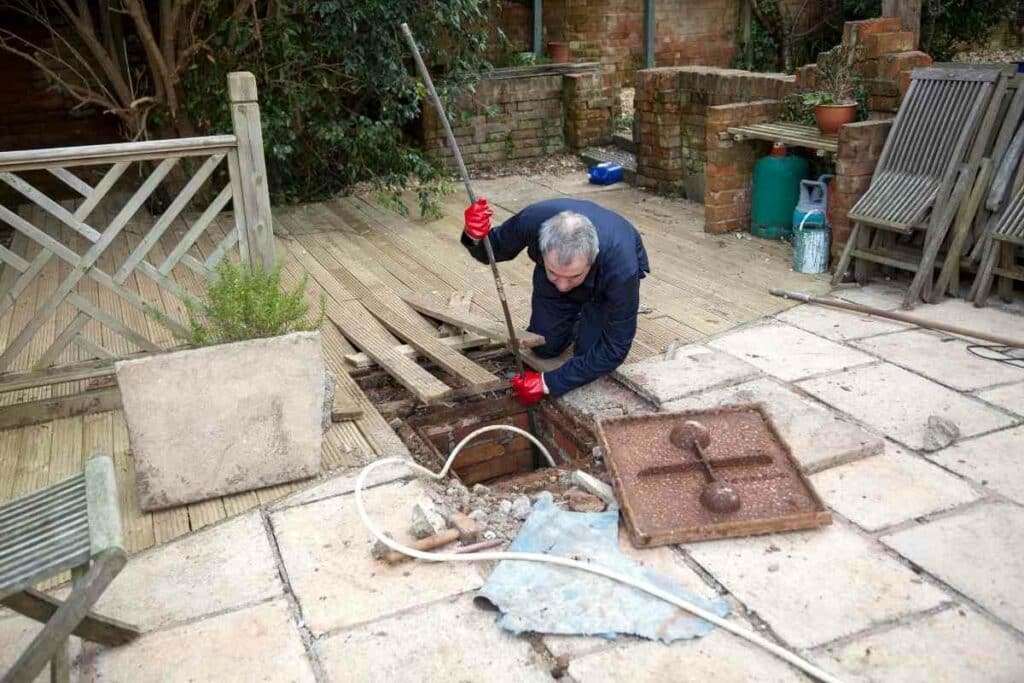
Additionally, cast iron drain lids need priming before painting.
Ensure that you clean both sides thoroughly, such that they don’t have any debris. Then, apply the primer on either side.
After priming, let the cover dry for at least a day before applying the first coat of paint.
Remember This – Follow the instructions on the paint’s container. It’s best to use a paint roller instead of a brush because it makes work easier and delivers a ‘cleaner’ finish.
Use the Surroundings
The surroundings also effectively keep your rusty drain covers out of sight.
While it’s easy to camouflage these lids with grass and potted plants, it isn’t a straightforward task if the manhole is on a tiled or a soil surface.
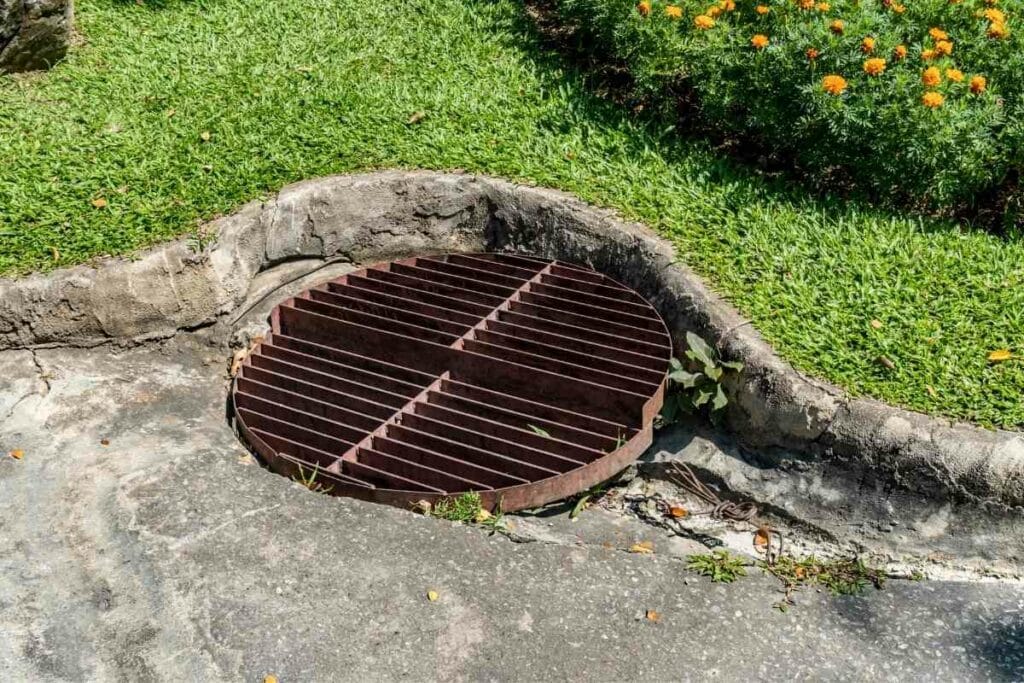
In the latter case, you’ll need to look for items that will hide the lid while matching the tiles or gravel.
Then, you’ll require a recessed drain cover that allows you to fit matching tiles or gravel without interfering with the hole.
Concrete or screed pavings are particularly useful for this task.
Cover with artificial turf
You don’t always have to use grass since artificial turf is equally effective while requiring little maintenance.
Install the turf above the lid and cut the edges to resemble natural grass.
This way, you deal with your drain cover problem and get extra ‘carpet’ for your walkways.
If you have a large sheet of turf, use a tracer wire to mark where you’ll cut to allow for opening and closing your drainage system.
This reduces wastage by ensuring you get the cover’s exact location and dimensions.
Nowadays, you can purchase many types of turf from local stores. They are available in several designs, some indistinguishable from natural grass.
Artificial turfs are the best pick if your schedule doesn’t allow enough time for routine maintenance.
It’s also helpful to people living in arid areas, where you need large amounts of water to keep the grass healthy.
On the Downside – High-quality artificial turfs are expensive. Also, it makes you lazy, such that you abandon the uncovered parts of your lawn.
This neglect results in overgrown grass and shrubs, which are unattractive, obstacles to movement, and provide habitat to pests and rodents.
Ensure that you mow your lawn regularly, even if artificial turfs partially cover it.
Cover it up with a small and mobile pond
Here, the most crucial element is the pond’s mobility – it must be movable so that the plumber doesn’t have issues accessing your drainage system.
The best thing about ponds is their customizability.
You can create personalized designs and shapes and add any water features you like! Who wouldn’t want that?
Turning a rusty drain cover into a beautiful pond has to be one of the most resourceful ways of using what would be unused.
What’s More – You can add color and life to your mobile pond by growing some plants. You can also throw in some ducks and geese.
Hide the drain cover under a birdbath
If mobile ponds aren’t your thing, you might opt for birdbaths. Although their span doesn’t cover the entire lid, they’re just as lovely.
You can use the remaining space to grow plants or add mosaics, which create a stunning view combined with the birdbath.
When choosing a birdbath, ensure that it’s sturdy enough to withstand harsh weather and sustain the weight of perching birds.
However, it also shouldn’t be too heavy that it can crumble the drain cover.
Disguise with art
You can spark your creativity by disguising your ugly drain cover with beautiful art. Consider drawing a mosaic that showcases your taste.
Ensure that you use bold colors to draw the attention of your visitors.
When creating art, you can install a larger cover on top of the existing one or another of the same size.
Whatever you do, don’t paint the original drain cover with your art.
DIY art is likely to be low-quality because most people aren’t masters at painting and do it unevenly.
Heads Up! It can also have legal repercussions, especially where the local authorities employ strict building regulations.
Things to Know Before Changing Your Drain Covers
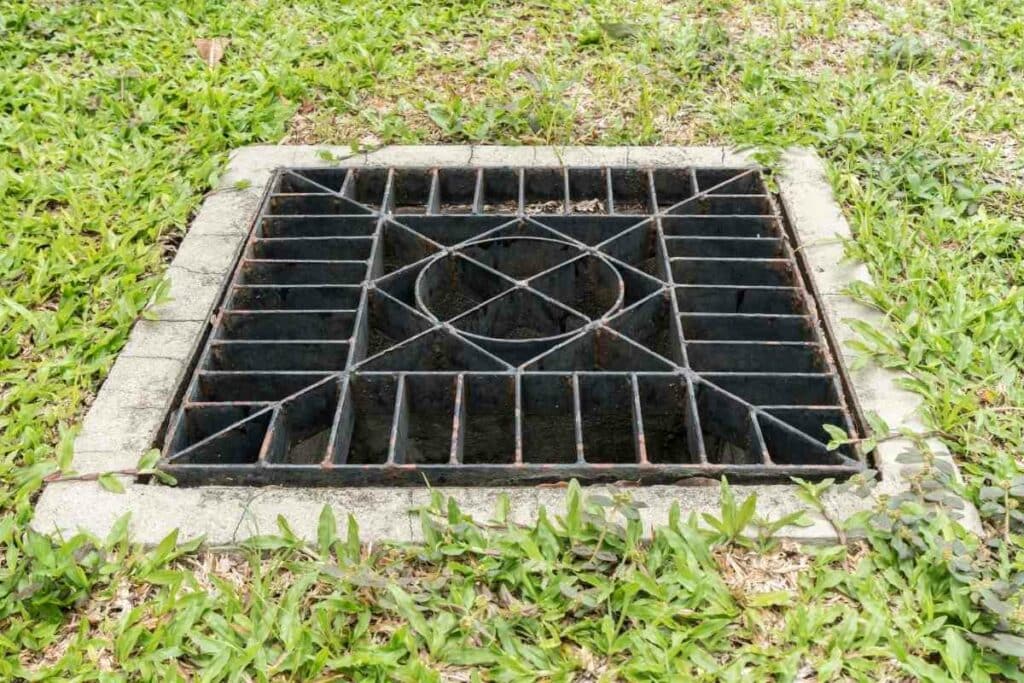
Here’s what you need to know before changing your drain covers.
Obtain Permission
It’s essential to have the proper permits before changing your drain covers.
However, this depends on the local building code and the agreement with your landlord if you live on a rented property.
Either way, you must prove that you have the right to change your covers.
These alterations are expensive to start with, and you might incur more charges and other legal consequences if you disregard the law.
Make it accessible
When changing your drain covers, ensure that your solution doesn’t impede access to your drainage system.
If your water utility company workers can’t access the hole because of a permanent cover, they’ll make a new one and impose the bill on you.
Ensure that whatever you choose to disguise your drain covers is removable.
Additionally – You must uncover your manhole during heavy rains to prevent flooding.
This is why the material used on the lid must be perforated or leave some space to allow excess runoff to enter the drainage system.
Frequently Asked Questions about Drain Covers
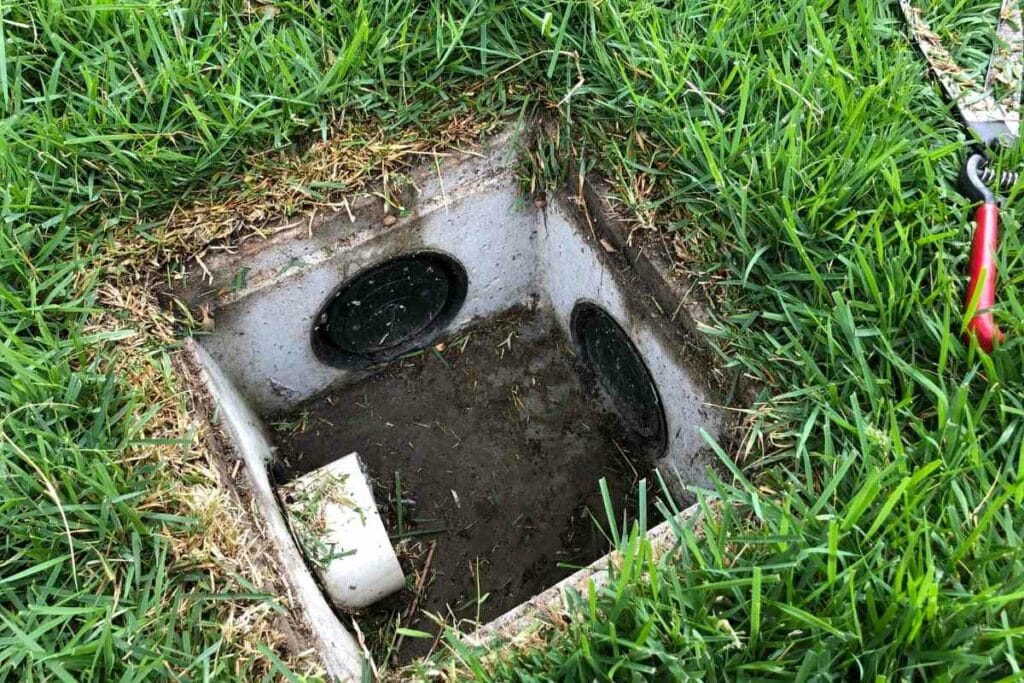
How do you remove rust from a drain cover?
Use salt and lime juice solution to dissolve surface rust. Start by sprinkling salt over the affected surface, then apply lime juice until it soaks. Leave the cover for a few hours and use a wire brush to remove the rust.
How do you loosen a stuck drain cover?
Pour some water into the gaps between the cover and the hole’s opening. Then, hit the hammer gently against the cover until it’s loose. If it doesn’t pop out, add more water.
How do you find a drain cover?
If you can’t find the drain cover in your garden, use a metal detector. It likely has a little layer of dirt that conceals it.
Wrapping Up
Drain covers provide safe entryways for drainage system maintenance, but they aren’t attractive.
Use the tips mentioned above to ensure that these necessary structures don’t hurt the overall aesthetic appeal of your property.
